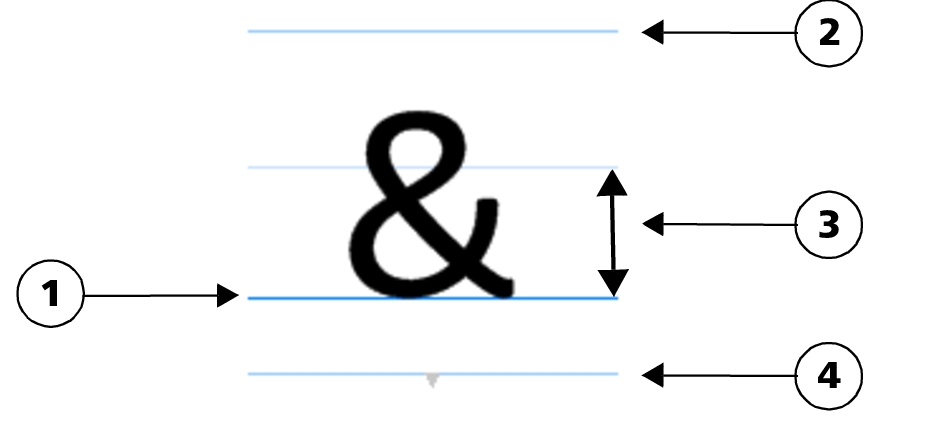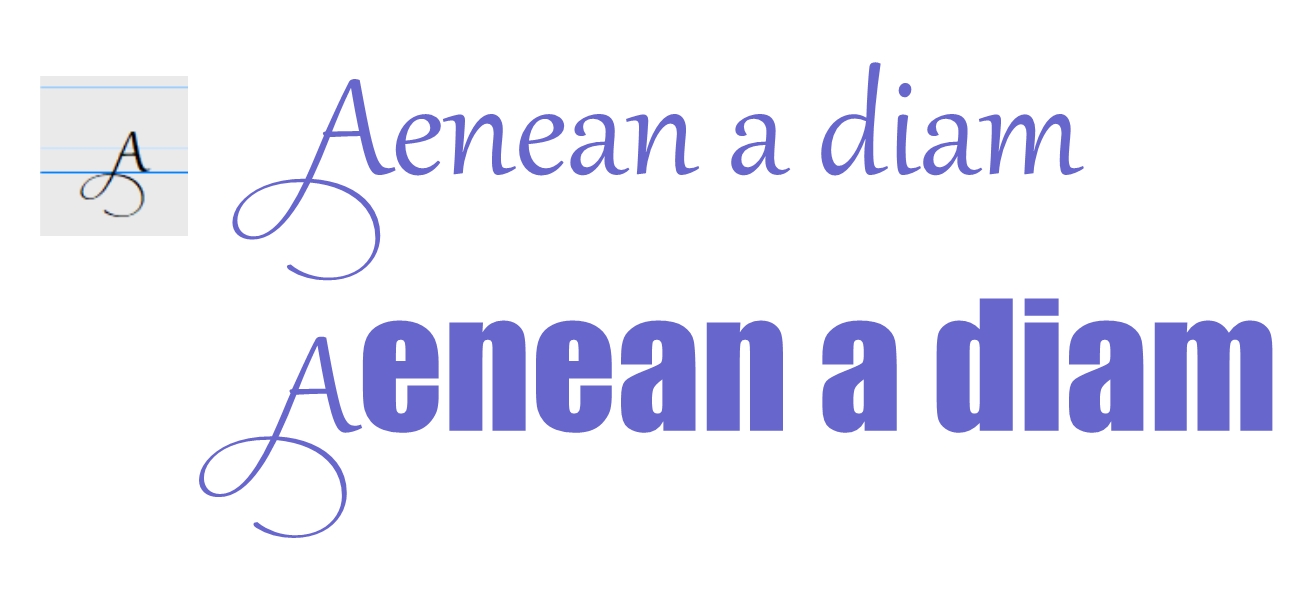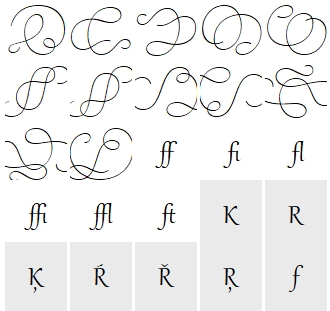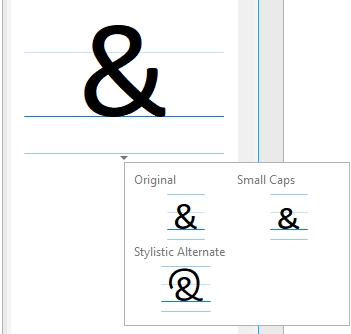Special characters, symbols, and glyphs
Using the Glyphs docker, you can find and insert special characters, symbols, and glyphs (variations of individual characters or character combinations) of OpenType fonts.
Filtering
All characters, symbols, and glyphs included in a font are displayed by default, but you can filter character subsets to display only the characters you want. For example, you can display only currency symbols or numbers, or you can display only Cyrillic characters and symbols.
Characters included in a font are organized in the following categories:
•
Common — includes arrows, currency, mathematical symbols, numbers, punctuation marks, and separators as well as CJK symbols and punctuation marks (used in Asian scripts)
•
Scripts — includes the scripts that the selected font supports, such as Latin, Greek, Cyrillic, Hiragana and Katakana, Han, Arabic, or Hebrew scripts
•
OpenType — includes the OpenType features provided by the selected font such as standard ligatures, discretionary ligatures, fraction, alternate annotation forms, and more. For more information about OpenType features, see
OpenType features.OpenType fonts
The Glyphs docker is ideal for viewing and applying the OpenType features provided by OpenType fonts. The default view shows a list of characters in which the glyphs for individual characters appear grouped. Alternatively, you can display a longer list that shows available glyphs at a glance.
Viewing character position
Each selected character appears against a set of blue lines that let you preview its position in relation to the text baseline.
|
1) Text baseline
|
3) Font x-height
|
|
2) Ascender line
|
4) Descender line
|
Most recently used special characters
You can use the list of most recently used special characters to copy characters that you use often. The list retains the font attributes of most recently used characters and any OpenType features that were applied. You can manage the list by removing characters that you no longer need.
Glyphs without Unicode numbers
Glyphs that have no Unicode mapping can be accessed only in specific circumstances and with specific sets of OpenType features. Such glyphs cannot be inserted by using keystrokes, but you can still add them to your document from the Glyphs docker.
Glyphs without Unicode numbers are inserted as glyphs not characters; therefore, you cannot change their font. For example, if you change the font of text that contains a glyph without Unicode mapping from Gabriola to Impact, the glyph will remain a Gabriola glyph as shown in the following example.
Left: A glyph without a Unicode number. Top: Text that starts with this glyph. Bottom: The font is changed, but the glyph remains the same.
It is easy to tell glyphs without Unicode mapping apart from other glyphs because they are displayed against a gray background in the Glyphs docker.
To add a special character, symbol, or glyph

1
Using the
Text tool

, click where you want to add the special character.
2
Click
Text  Glyphs
Glyphs.
3
In the
Glyphs docker, choose a font from the
Font list box.
4
Double-click a character in the
Character and glyph list.
If you cannot find the character you want, open the
Character filter list box, and enable the
Entire font check box.
|
|
|
|
|
Using the Pick tool  , drag a character to the document window. |
|
|
Click a character in the Character and glyph list, and click Copy. |
View information about a selected character |
Click the arrow button  at the bottom of the Character and glyph list to view any of the following attributes that are applicable: character name, ID, Unicode number, keyboard shortcut for inserting the character, the OpenType feature name, and the language for glyphs that can be displayed properly only in a specific language. |
|
|
To zoom in and out in preset increments, click the zoom buttons to the right and left of the Zoom slider. |
Navigate to a special character by using an Alt code |
Click in the Character and glyph list, hold down Alt, and type the Alt code for the character you want. |
|
|
Press the corresponding key on the keyboard. |
To filter special characters, symbols, and glyphs

1
Click
Text  Glyphs
Glyphs.
2
In the
Glyphs docker, choose a font from the
Font list box.
3
Open the
Character filter list box, and enable the check boxes for the character subsets that you want to display.
To view glyphs of OpenType features

1
Click
Text  Glyphs
Glyphs.
2
In the
Glyphs docker, choose an OpenType font from the
Font list box.
3
Open the
Character filter list box, and in the
OpenType area, enable any of the check boxes for the available OpenType features.
4
Do one of the following:
•
To display a list that includes grouped glyphs, make sure that the
Show all glyphs button

does not appear pressed. To view all glyphs in a group, click a character, and then click the OpenType feature indicator. Click a glyph to display it in the
Character and glyph list.
•
To display a list that includes all available glyphs, click the
Show all glyphs button

.
Left: The OpenType feature indicators below individual characters show that more glyphs are available. Right: When the Show all glyphs button (1) is pressed, you can see available glyphs at a glance.
Viewing grouped glyphs

The Show all glyphs button is not available for fonts that do not support OpenType features.
Some glyphs provided by OpenType features vary depending on the context in which they appear and cannot be shown in the Glyphs docker. You can view and insert such glyphs in the document window by using the onscreen OpenType feature indicator. For more information, see To enable the onscreen OpenType feature indicator.
To use the list of most recently used special characters

1
Click
Text  Glyphs
Glyphs.
2
In the list of most recently used special characters (glyphs), perform a task from the following table.
|
|
|
View the font and OpenType attributes of a character |
|
Copy a character from the list |
Right-click the character, and click Copy. |
Remove characters from the list |
Right-click a character, and click Remove or Remove all. |




